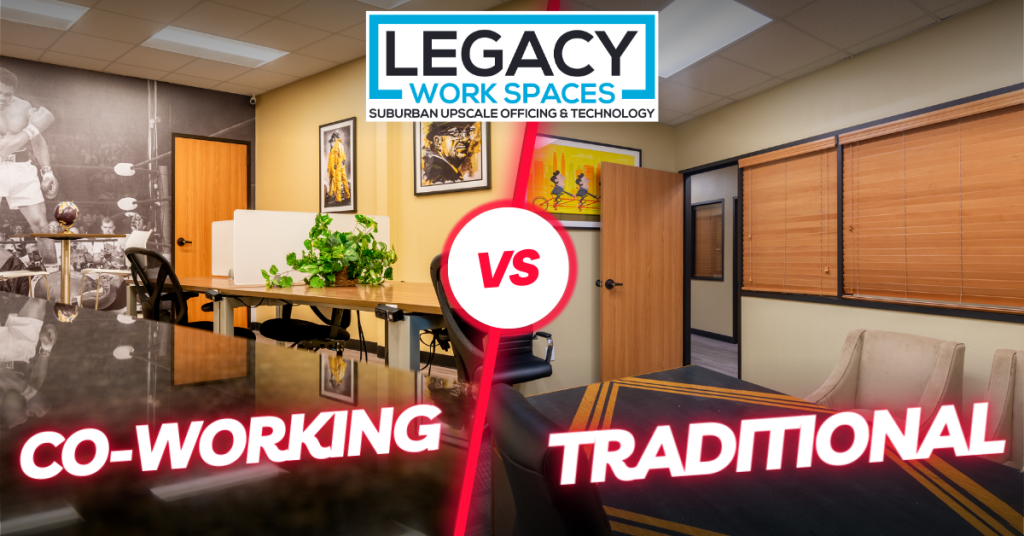
In the ever-evolving landscape of work, businesses today face a pivotal decision when it comes to office space: Should they opt for a traditional office setup or embrace the growing trend of coworking spaces? Each option comes with its own set of advantages and considerations. In this blog post, we’ll explore the key differences between coworking spaces and traditional offices to help you determine which is the best fit for your business.
The Rise of Coworking Spaces
In recent years, coworking spaces have gained popularity for various reasons:
1. Flexibility
Coworking spaces offer unparalleled flexibility. They allow businesses to scale up or down quickly without the long-term commitments associated with traditional leases. This flexibility is especially appealing to startups, freelancers, and small businesses.
2. Cost Savings
Traditional office spaces often come with substantial overhead costs, including rent, utilities, and maintenance. Coworking spaces typically offer all-inclusive pricing, helping businesses save money and simplify budgeting.
3. Networking Opportunities
One of the most significant benefits of coworking spaces is the opportunity for networking. These environments attract a diverse group of professionals from various industries, creating an environment conducive to collaboration and idea-sharing.
4. Amenities and Services
Coworking spaces often provide an array of amenities, such as high-speed internet, meeting rooms, and kitchen facilities. Some even offer additional services like mail handling and administrative support, allowing businesses to focus on their core activities.
Traditional Offices: The Classic Choice
While coworking spaces have their merits, traditional offices still have a place in the business world:
1. Brand Identity
Having a dedicated office space can reinforce your company’s brand and legitimacy. It provides a physical presence for clients, partners, and employees, which can be crucial for certain businesses.
2. Privacy and Control
Traditional offices offer greater privacy and control over your workspace. You can customize the layout, decor, and security measures to align with your company’s specific needs and culture.
3. Team Cohesion
For businesses that prioritize team cohesion and a strong company culture, a traditional office space can facilitate face-to-face interactions and teamwork. It can be especially beneficial for larger teams or those engaged in specialized work.
4. Compliance and Security
In some industries, strict compliance and security requirements make traditional offices a more suitable choice. These offices allow you to implement stringent access controls and data protection measures.
Choosing the Right Option
The decision between coworking and a traditional office depends on several factors:
1. Company Size and Growth
Consider your current team size and growth projections. Coworking spaces are excellent for startups and small teams, while larger, established companies may benefit from a dedicated office.
2. Budget
Evaluate your budget and financial resources. Coworking spaces may offer cost savings in the short term, but a traditional office could be a better long-term investment.
3. Work Style and Culture
Think about your company’s work style and culture. Do you value flexibility, networking, and innovation, or do you prioritize control, privacy, and a branded space?
4. Industry and Compliance
Examine your industry and any regulatory or compliance requirements. Some industries, such as healthcare or finance, may necessitate a traditional office for security and privacy reasons.
Conclusion
There is no one-size-fits-all answer to the coworking vs. traditional office dilemma. Your choice should align with your business’s unique needs, goals, and culture. Some businesses may even find value in combining both options, using coworking spaces for remote workers or satellite offices while maintaining a traditional headquarters.
Ultimately, the decision boils down to understanding your company’s priorities and carefully evaluating the benefits and drawbacks of each option. By making an informed choice, you can create an office environment that enhances productivity, supports your team, and contributes to your overall success.

